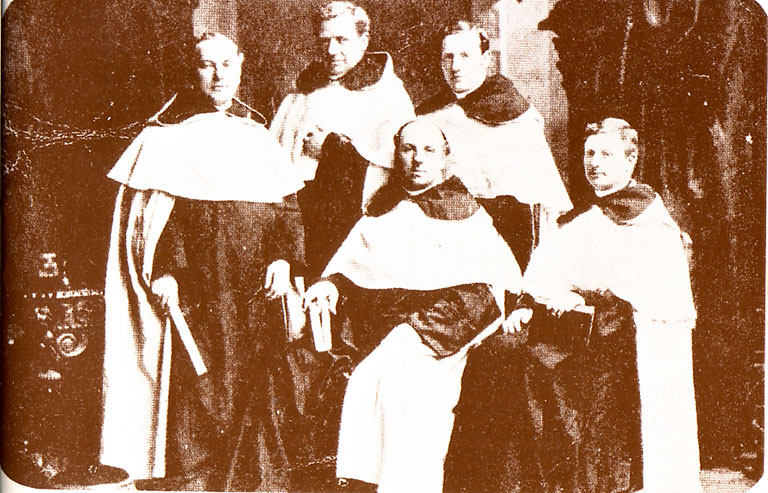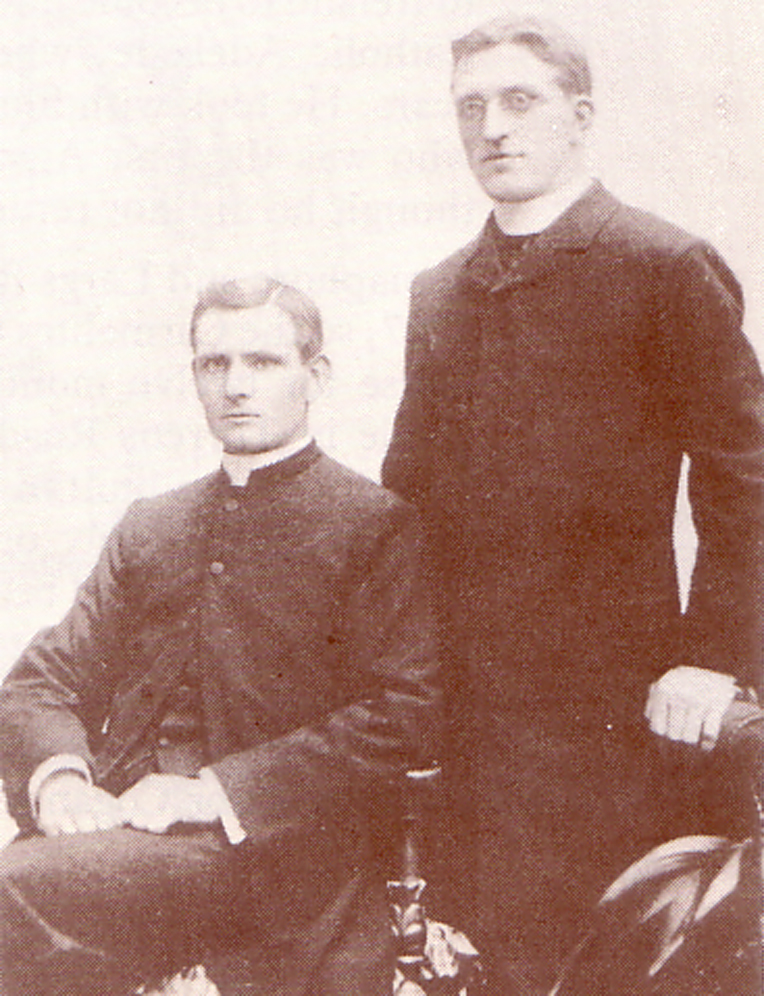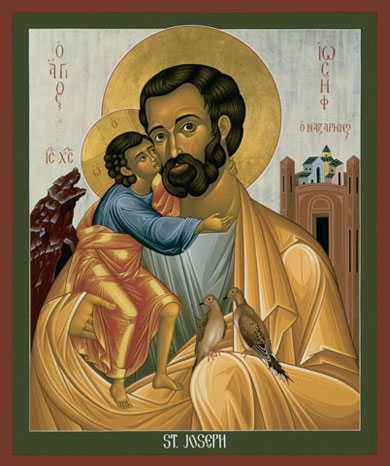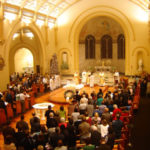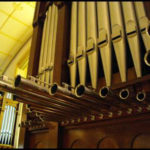
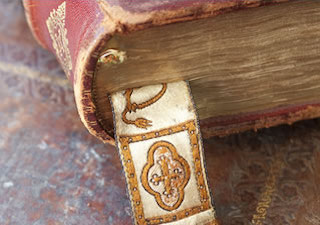
Their new parish, formerly part of Emerald Hill (South Melbourne), extended along the beachfront from the river at Port Melbourne to Fitzroy Street, St. Kilda. The Carmelites celebrated their first Mass on 7 May 1882 in St Joseph’s, Port Melbourne, which had opened up in 1881.
The boom conditions of the 1880s encouraged the Carmelites to buy and build on a large scale. Several parcels of land were bought in the parish for use as possible future churches. The Carmelites also bought land on Beaconsfield Parade and built their first Priory there in 1886.
As the Middle Park/West St Kilda end of the parish began to expand, plans were made for two new churches, one in Richardson Street, Middle Park and another in Mary Street, West St Kilda.
In February 1889, the three-roomed St Joseph’s School, opened in 1857, burnt down. It was replaced by a new school hall for 300 children built along side St Joseph’s Church in September that year.
In November 1891, the Carmelites opened the first Church of Our Lady of Mount Carmel on the corner of Richardson and Wright Streets, Middle Park.
The church, which accommodated 500 people, was a red and buff brick with cement facings, in Gothic style and with a tall belfry at the south-east corner. A pipe organ was installed to accompany the singing of High Mass on Sunday mornings and Vespers and Benediction on Sunday evenings.
Time of Crisis 1900
Between 1882 and 1891, the Carmelites had spent well over £20,000 and despite their fundraising efforts were still £11,000 in debt, at a time when the effects of the economic depression were bring felt throughout the country. This was particularly so in Port Melbourne, which was hard hit by the great maritime strike of 1890. Fundraising continued throughout the 1890s but by 1900 the Carmelites faced financial crisis. In July, a meeting of parishioners was told that, with the debt still at £9,000, the parish faced the humiliating prospect of foreclosure by the banks.
Prior Kelly suggested the formation of a Guild of Ransomers of Our Lady’s Church. The Victorian Bishop allowed the appeal to be made state-wide. Some 25,000 brochures were distributed and the Guild soon had 4,000 members. The National Bank generously waived the interest of £2,912, reducing the debt to £6,000 of which £2,000 was required within three years. The appeal was a great success and by November the Middle Park church, and the financial credit of the Catholic Church in general, had been saved.
By 1908, with an increased Catholic population and more Carmelites in Melbourne, it seemed advisable to divide Sandridge parish into two new parishes. In 1909 Archbishop Carr formally created the parishes of Port Melbourne and Middle Park, setting the Boundary between the two at Pickles Street. In January 1909 the Carmelites moved from the Beaconsfield Parade property to two new Priories in Wright Street, Middle Park and Stokes Street, Port Melbourne. The former Priory in Beaconsfield Parade was acquired by the Brigidine Sisters as a Novitiate. From there, the Sisters also took charge of St Joseph’s School which had been staffed mainly by lay teachers since its foundation in 1857. The first Parish Priest of Middle Park was Prior Joseph Kindelan, and of Port Melbourne was Prior John Scanlon. They had arrived together from Ireland in 1892.
Port Melbourne 1909-1928
Fr John Scanlon was prior and parish priest in Port Melbourne from 1909-1919, and after his term of office in Adelaide, returned to Port Melbourne in 1923 where he spent most of the remainder of his life. He died, a well-loved figure, in 1940. In 1912 he built a new parish school at the corner of Bay and Rouse Streets. In 1919 he was succeeded briefly by Fr Ronayne who was, however, soon recalled to Rome as Assistant-General of the Order. Fr Peter O’Dwyer was then pastor of Port Melbourne from 1921-29. Though a shy man, he was both kind and multi-talented. He was a wood-carver, printer, painter (he painted the scenery for the stage of Middle Park Hall), and musician. In the latter capacity he was famous as a bag-pipe player, and even attempted to found Australia’s for Altar Boy’s Irish Pipe Band. In 1923, he completed St Joseph’s Church by adding two side chapels, sacristies, a new sanctuary and confessionals. With him that year were Fr McCaffrey and Fr McDermott, who had been a chaplain during the First World War and who died in 1925 partly of injuries received in a gas attack. Port Melbourne suffered greatly during the depression, as it did during the long and bitter waterside workers’ strike of 1928. In those years Fr O’Dwyer ran a soup kitchen which became well-known throughout Melbourne.
Middle Park 1909-1928
Under Prior Kindelan, Middle Park was also making great progress. By 1912, it had become evident that the beautiful little church of 1891 was too small for the parish. Plans were drawn up for a replacement but, for fear of incurring a debt beyond the means of the parish, it was decided to add a new sanctuary and transepts to the existing building and to complete the rest at a later date. The church thus remained something of an architectural curiosity until its completion by Fr Power in 1927. Fr Kindelan’s next move was the establishment of a boys’ school in the parish, which the Christian Brothers agreed to staff. It began in the old Alston mansion, “Montalto”, in 1917, moving to more spacious premises in 1924. Fr Kevin McMahon, who joined the Carmelites in 1932, was one of the founding pupils. In 1919, Fr Kindelan built the Carmelite Hall, which replaced the old wooden hall of 1892. With its elaborate stage and club rooms, it was one of the finest parish halls in Australia. Among the many priests at Middle Park during these years were Frs Maher, McCabe, Wade and Devlin. At the end of his term of office in 1919, Fr Power took the reins from Prior Kindelan, who remained in Middle Park as Vicar-Provincial. He continued to be a familiar figure as he did the rounds on his bicycle. After a painful illness, he died on 17 March 1926. Middle Park parishioners carried out the suggestion made by Archbishop Mannix at the Prior’s funeral by completing the church as a memorial to him. It was opened in 1927.
1928 was a momentous year for Carmel in Australia. Until then, few Australians had sought to become Carmelites and those who had, had been trained in Rome or Ireland.
It was Fr Power’s dream to encourage Australian vocations by opening a novitiate here and in 1928 the opportunity came when three applicants presented themselves. Despite the misgivings of other Carmelites (there were only eight in Australia), Fr Power won approval for his scheme and the novitiate opened in June 1928 in St Vincent’s Place, Albert Park.
In the same year, the Australian house was separated from the Irish Province to become a Commissariat with Fr Power the first Commissary General. Soon the house at Albert Park was outgrown, and in 1930 the novices and students moved to Kew, from where the students travelled each day to the seminary at Werribee.
On 5 May 1933, he died a much loved figure and was replaced at Middle Park by Fr Paul Clery. Under his influence Middle Park parish, particularly its sodalities, thrived – even when during the war, six Carmelites served as military chaplains.
Expansion and Renewal 1948 onwards
On September 1948, the Australian Commissariat became an independent Province, with Fr E.J. Nugent its first Provincial. On that occasion, Fr Kilian Lynch, the Prior General, urged the Province to cherish the spirit of Carmel, especially the spirit of prayer.
In some ways, his words set the tone for the years ahead: during them, Carmelites in the Parish, as throughout the Order, would strive to renew their sense of vocation as religious.
In January 2005, the two parishes were amalgamated into one. As a Carmelite parish, we are a community of prayer who regularly gather as a family for Eucharist and who believe that Jesus Christ came to reveal God’s love for us. We also draw our inspiration from the gifts and charisms present in those among us.
(Source: The Carmelites in Australia: A brief history by Paul Chandler, O.Carm., 1981)

Saint Joseph, the husband of Mary, the mother of Jesus, has been honoured in the Catholic Church for many centuries as a good husband and father. According to the Gospel of Matthew, Joseph was a carpenter and “a son of David”.
When the first Carmelites built their chapel on Mount Carmel in the early13th century, they named it in honour of “Saint Mary”.
Almost from the beginning of the Order, Mary and the Old Testament prophet Elijah, became the two principal sources of inspiration for Carmelite spirituality. Both were seen to embody the ideal of the true contemplative person and of Christian discipleship – one who has a deep and abiding experience of God, and who brings God into the world in word and action.
Soon after the Order’s migration to Europe (about 1247) the early Carmelites struggled for approval and recognition. They placed their trust in Mary, praying to her under the title of “Our Lady of Mount Carmel”. In Europe, the Carmelites were called “the brothers of the Most Blessed Virgin Mary of Mount Carmel”. That is still the official title of the Order today. Many references to Mary as the Carmelites’ sister are found in early writings.
The feast day of Our Lady of Mount Carmel is 16 July.

Different forms of prayer are used at various times during the year.
You can also obtain details from the latest issue of our weekly newsletter.
Meditation
Meditation is held every Thursday evening at 7.00pm in the Malone Room at the Carmelite Hall, 216 Richardson Street, Middle Park.
Lectio Divina
Lectio divina is an authentic source of Christian spirituality recommended by the Carmelite Rule. Carmelites practise it every day, to grow in the surpassing knowledge of Christ. In this way, to put into practice, the Apostle Paul’s commandment: “Let the sword of the spirit, the Word of God, live abundantly in your mouth and in your hearts; and whatever you must do, do it in the name of the Lord.”
A group meets online each Friday morning for Lectio Divina.
You can also click here for more information & details.

We acknowledge the Yalukit Willam clan
the traditional owners and custodians of the land on which our parish standsWe pay our respects to them. May we walk gently here.
THE RECONCILIATION GARDEN

The Reconciliation Garden is situated on the Wright St side of Our Lady of Mount Carmel Church. This garden area was established as a place to reflect and contemplate the work of Reconciliation which acknowledges, yet transcends, all differences of race and culture.
Our plants have been specially chosen as they grow naturally along the beach and in the sand dune areas of the Port Phillip Bay coastline.
These species were present when the first Europeans arrived and so we hope that they will encourage you to reflect on the thoughts of the Indigenous land owners as they witnessed the Europeans entering their lands.
THE POSSUM CLOAK SCULPTURE
THE ELIJAH WINDOW
THE MESSAGE STICK

Pope John Paul instructed the Church to “joyfully” receive the contribution that the Aboriginal people have to make in order “to be fully the Church that Jesus wants her to be.” The use of Aboriginal symbols enriches the liturgy linking the Gospel message to this land – Australia.
On 23 June 2007, a special ceremony was held in the Cardinal Knox Centre to commemorate a number of anniversaries in 2007, including the 50th anniversary of NAIDOC Week, the 40th anniversary of the 1967 Referendum, the 15th anniversary of the Black Deaths in Custody Report and the 10th anniversary of the ‘Bringing Them Home’ Report.
During this ceremony two message sticks were passed by Aboriginal Elders to representatives of our parish and placed into our trust and care.
A message stick is a means of communication in Aboriginal culture. The message was inscribed on the stick and “passed on” so that everyone could receive the same message. The message that accompanies the message sticks in Catholic communities, is one of love, hope, forgiveness and peace. This is why it accompanies the Gospel – to remind the congregation that the message of love, hope, forgiveness and peace in the Gospe needs to be handed on.
It is our privilege to have the message sticks in our Parish, ever mindful of the sacred trust given to us.
SYMBOLS ON THE MESSAGE STICKS

- Bunjil, the eagle (Ancient dreaming ) – God the Father & Old Testament•
- The Cross (modern Dreaming) – Jesus’ suffering & New Testament
- Campfire/Smoke represents the Holy Spirit/Penitential Rite
- The Coolamon (bowl) represents the offering of gifts/Eucharist/Reconciliation
- Southern Cross represents Christ’s Guidance/Australia
- The words of Forgiveness, Faith, Hope, Love – all symbols of Aboriginal Culture & Reconciliation
THE ARTISTS
St Joseph’s Message Stick (pictured left) was created by Joshua Kirby, son of Samuel Kirby who is from Wiradjeri and Mutthi Mutthi nations. Joshua watched his father make boomerangs and today tries to fill his father’s shoes. Joshua lives in Bendigo but Balranald is still his home. Today, Joshua enjoys teaching his grandchildren so that one day they will fill his shoes.
Our Lady of Mount Carmel’s Message Stick (pictured above) was created by Derik Smith who is a Barkinji man living in the Mildura area. Derik likes to paint tradtional animals, spirit patterns and symbols. Derik enjoys football, darts and bowls. Painting his Dreaming Country is a way of teaching his three children their connection to their country.
THE COOLAMON

Being awake, being prepared, listening and waiting to the elders as they pass on the wisdom and law, is essential to Aboriginal culture.
The Victorian Aboriginal Catholic Ministry has entrusted to us a sacred ritual for each first Sunday of Advent. During this ritual we place in our midst a very strong symbol for Aboriginal women from the antiquity of the ancient Dreaming – The Coolamon.
It is a receptacle for carrying food, water and small babies. It is an appropriate symbol for Advent as we listen and wait for the coming of the Spirit Child to Mary who is also waiting and preparing.So, as a sign of waiting for Jesus the Spirit Child and our Spiritual Food, we turn the Coolamon upside down at the foot of the altar. At Christmas the messenger bird Kookaburra, calls us to awaken to a New Dawn, a “New Dreaming”.
The Coolamon will then be turned upright to receive the promised Spirit Child who becomes our Spiritual Food in the Eucharist. The Coolamon, carrying the Christ child, will then be placed in the nativity scene.
NATIONAL ABORIGINAL AND TORRES STRAIT ISLANDER SUNDAY

MASS TIMES
St Joseph's Church
cnr Rouse and Stoke Streets
Port Melbourne
Mon, Wed, Fri 9am
Sunday 9am
Children welcome at all Masses
MASS TIMES
Our Lady of Mt Carmel Church
Cnr Richardson & Wright Streets
Middle Park
Tue, Thu, Sat 9am
Saturday (Vigil) 5pm
Sunday 10.30am
Children welcome at all Masses
PARISH OFFICE OPENING TIMES
The Carmelite Parish Office is currently open Tuesday and Wednesday between 9.00am and 4.00pm and Friday between 9.00am and 12.00pm (except public holidays). The Parish Office is closed on Monday and Thursday. The Parish Office phone number is 9681 9600. If we can’t answer at the time, please leave a message and we will get back to you as soon as possible. You can email any other enquiries to parish@sj-mc.org.au and once again, we will get back to you as soon as possible. The After Hours emergency number is 0419 136 030.
